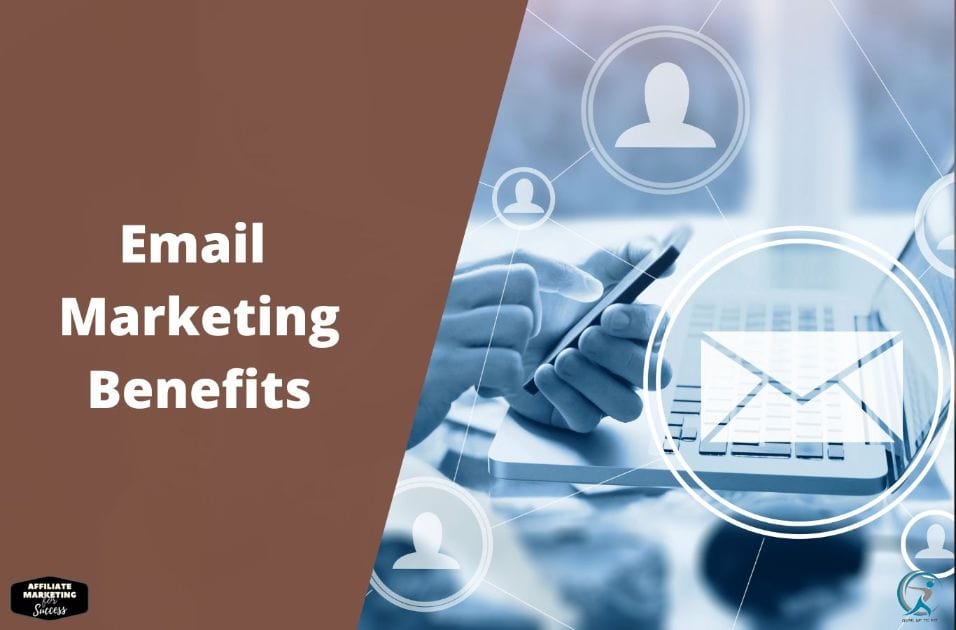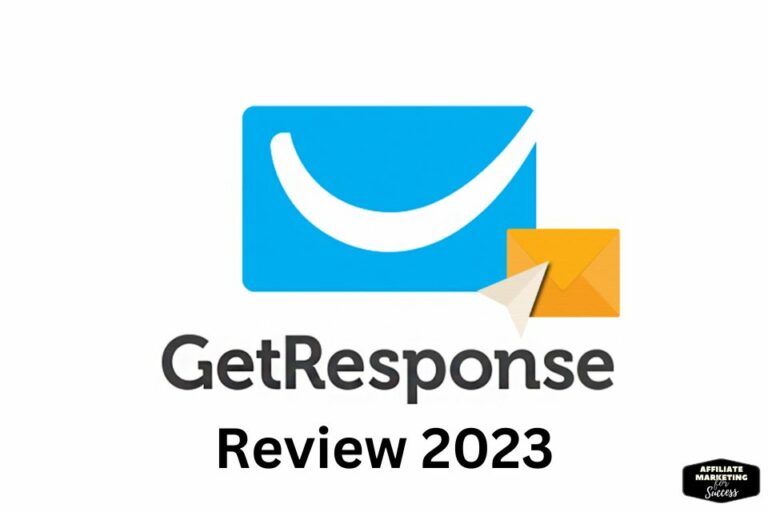Email Marketing Benefits: 7 Proven Ways to Boost ROI
For every $1 spent on email marketing, businesses can see an average return of $42 – a staggering 4,200% ROI1! Email marketing is a powerful way for businesses to talk directly to customers and prospects. It lets them send updates and special offers that make people want to engage more with the brand.
Email marketing is useful at different stages of the customer journey. It helps from the first time someone learns about a product to after they buy it. This makes email marketing very beneficial for businesses.
There will be 4.48 billion email users worldwide by 20241. And 99% of people check their email every day2. This shows email marketing is a great way for businesses to reach a lot of people who are really interested in what they have to say. In fact, 80% of retailers think email marketing is the best way to keep customers coming back2.
 Key Takeaways
Key Takeaways
- Email marketing delivers an exceptional return on investment (ROI), generating an average of $40 for every $1 spent2.
- Personalized email content, such as subject lines, can increase open rates by 26%1.
- Nurtured leads make 47% larger purchases than non-nurtured leads, showing how email marketing can boost sales2.
- Email marketing allows for targeted messaging, measurable results, and enhanced brand awareness.
- Automation and data-driven insights can make email marketing campaigns more efficient and effective.
What Is Email Marketing and Why Does It Matter?
Email marketing is a way for businesses to talk directly to customers and prospects through their emails3. It’s about sending messages that invite people to engage and build a closer bond with the brand. Think of it as having a direct way to share your story and products with customers.
Defining Email Marketing
Email marketing sends messages to a group of people to promote products or services, build brand awareness, or help leads and customers4. It’s a direct way to connect with people, share value, and help your business grow.
The Email Marketing Opportunity
The chance with email marketing is huge and growing. With4 4.9 billion email accounts worldwide by 2017, and5 4 billion users in 2020 growing to 4.6 billion by 2025, it offers a big audience. Plus, 90% of emails get to the inbox, unlike only 2% of Facebook posts4. Email also has a 3% click-through rate, much higher than Twitter’s 0.5%4.
24% of people from email marketing buy something, more than from search engines or social media4. In fact, 47% of marketers say email is their top marketing channel, beating social media, SEO, and content marketing5.
The chance with email marketing is clear. It has great reach, engagement, and a strong return on investment3. Email marketing can bring in up to $45 for every dollar spent, with an average of $365. It also saves money with automation, making it easier and cheaper to talk to customers and prospects.
“Email is the most cost-effective way to acquire, nurture, and retain customers.” – Neil Patel, Co-Founder of NP Digital
Overall, email marketing is a great chance for businesses to connect with people, build relationships, and get results. With its unmatched reach, engagement, and ROI, it’s a strategy you can’t ignore345.
Email Marketing Benefits
Email marketing is a key tool for businesses of all sizes. It helps drive website traffic, boost brand awareness, and keep customers coming back. Let’s explore how it can help your business grow.
Increased Website Traffic
Think of your website as a busy party. You want lots of people there, right? Email marketing is like sending out great invitations. It tells your audience about the cool stuff on your website they shouldn’t miss.
This can really boost your website traffic. More people will visit your site6. By adding links to your website in emails, you get more targeted traffic. This can lead to more sales and conversions.
Enhanced Brand Awareness
It’s key for people to know about your business. Email marketing is a strong way to spread the word about your brand. Each email you send helps make your brand more visible7.
Regular emails keep customers connected and valued. This makes them more likely to stay with your brand and keep coming back.
Improved Customer Retention
Keeping strong ties with your customers is as vital as getting new ones. Email marketing helps you do just that. It keeps your brand in their minds and builds loyalty6.
By sending valuable, personalized content, you create a bond with your customers. This keeps them coming back for more7.
Email marketing offers many benefits. It boosts website traffic, brand awareness, and customer loyalty. This strategy is a strong tool for business growth. Using email marketing can open new doors for success and elevate your company678.
Boosting Sales and Nurturing Leads
Email marketing is a strong tool for businesses wanting to increase sales and look after leads. It’s cheaper than old-school ads9. This lets companies send out special campaigns that hit the mark with their audience. This can lead to more sales and more money.
Driving Conversions and Revenue
Using data smartly in email marketing helps businesses make the most of their campaigns9. Studies show email marketing can bring in a huge 4200% return on investment10. That means for every dollar spent, you get back $42.
Automation and personal touches help send the right message at the right time. This makes buying easy for customers9.
Lead Nurturing and Customer Engagement
Email marketing is key for looking after leads and keeping customers interested11. By sorting out their audience and making emails personal, companies can get closer to their customers10. This makes messages more relevant and can lead to more sales and coming back customers11.
It also helps guide people from just knowing about a product to buying it11. By sending out useful content often, companies can turn leads into loyal customers11.
Using email marketing smartly can really change the game for businesses. It helps sell more, get more conversions, and take care of leads91011.,,
Personalization, Automation, and Data-Driven Insights
In today’s digital world, it’s hard to stand out. Email marketing personalization helps grab your audience’s attention. It makes messages feel made just for each customer12.
Email marketing personalization and automation makes your work easier. It saves time and lets you focus on big plans. Automated emails make sure no customer gets lost, helping you keep up with strategy13.
Email marketing’s strength comes from data-driven insights. These insights help you send the right messages to the right people. This boosts engagement and sales1213.
But there’s more to it. Email marketing compliance is key for trust and a good reputation. Automation and personalization help you follow the law and succeed14.
The future of email marketing is about making things better and testing them. By testing and improving your campaigns, you can do even better and beat the competition14.
Email marketing can increase website visits, brand awareness, and sales. It helps with lead nurturing too. By using personalization, automation, and data insights, you can make your email marketing great. This will help your business do well for a long time121314.
Increasing Open Rates and Click-Through Rates
One of the key benefits of email marketing is the ability to track your results and measure your success. By using a tool like Email Subject Line Generator to optimize your subject lines, you can increase your open rates and click-through rates, ultimately leading to better ROI from your email campaigns:
The Future of Email Marketing
As we look ahead, email marketing continues to evolve with emerging technologies and changing consumer preferences. Integrating AI and machine learning into email marketing strategies can further enhance personalization and campaign effectiveness.
Conclusion
Email marketing is a strong tool for business growth. It brings many benefits like more website visitors15, better brand awareness16, and keeping customers16. It also helps in making more sales16, personalizing messages, automating tasks, and using data wisely16. In 2023, brands made about $36 for every dollar spent on email marketing17.
As email marketing changes, businesses must keep up and adjust their plans. Using smart tactics like custom subject lines17, focused email campaigns15, and data insights16 can lead to more success. With its flexibility and low cost15, it’s no surprise 37% of brands are upping their email marketing budgets17.
The future of email marketing is bright, promising more growth for businesses big and small. By using email marketing well, companies can connect better with their audience, strengthen customer ties, and reach their big goals.
Source Links
- https://gogeekz.com/benefits-of-managed-email-marketing/
- https://www.linkedin.com/pulse/unleash-power-email-marketing-secret-weapon-ecommerce-success-lw7de?trk=public_post
- https://www.businessnewsdaily.com/15997-email-marketing-benefits.html
- https://www.campaignmonitor.com/resources/guides/why-email/
- https://moosend.com/blog/email-marketing-benefits/
- https://mailchimp.com/resources/email-marketing-benefits/
- https://www.forbes.com/advisor/business/software/benefits-email-marketing/
- https://blog.hubspot.com/marketing/benefits-of-email-marketing
- https://abmatic.ai/blog/benefits-of-email-marketing-to-nurture-leads
- https://www.linkedin.com/pulse/how-use-email-marketing-nurture-leads-increase-sales-cjgme
- https://abmatic.ai/blog/benefits-of-email-marketing-for-lead-nurturing
- https://niteco.com/articles/data-driven-insights-email-marketing/
- https://extension.psu.edu/the-power-of-marketing-automation-and-personalized-engagement
- https://www.eweek.com/artificial-intelligence/ai-for-email-marketing/
- https://elevatedmarketing.solutions/why-email-marketing-is-a-vital-marketing-strategy-to-your-success/
- https://www.geeksforgeeks.org/email-marketing-types-how-to-do-it-benefits-and-drawbacks/
- https://www.schooleymitchell.com/blog/is-email-marketing-worth-it-for-your-organization/
I’m Alexios Papaioannou, an experienced affiliate marketer and content creator. With a decade of expertise, I excel in crafting engaging blog posts to boost your brand. My love for running fuels my creativity. Let’s create exceptional content together!







